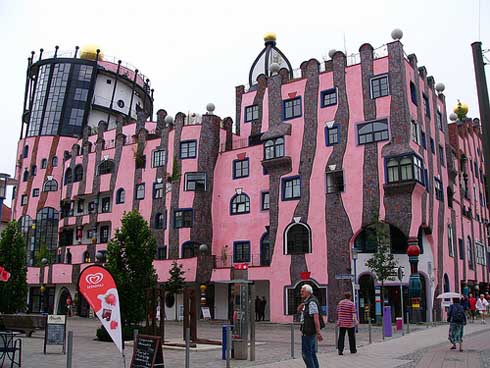Early in life, we are all taught to draw straight lines, as they are orderly and efficient in subjects such as math, physics, etc. Many occupations also depend on one’s skill of drawing straight lines, such as engineering, architecture, and graphic design. What if, however, one were to reject the entire notion of straight lines? Austrian artist and designer Tausendsassa Friedensreich Regentag Dunkelbunt Hundertwasser (which translates to “Multi-Talented Peace-Filled Rainy Day Dark-Colored Hundred Waters” in German) did just that in creating all of his life’s works. One of Hundertwasser’s most famous works is the Green Citadel of Magdeburg, an asymmetrical, salmon pink castle with mis-matched windows and curved, winding floorboards. Highly concerned with living in alignment with nature, Hundertwasser also planted trees inside the buildings, and allowed for moss and mold to grow on its walls.
Many of Hundertwasser’s ideas are widely received as radical, for Hundertwasser claimed that straight lines are “completely devoid of humanity,” and are both “godless and immoral.” The resemblance between straight lines and prisons and cages inspired Hundertwasser to “rebel against confinement” that goes against “human nature” and to “reimagine what architecture is supposed to do.” Please tune into the podcast from 99% Invisible to hear more about Hundertwasser’s innovative thinking and architecture!

